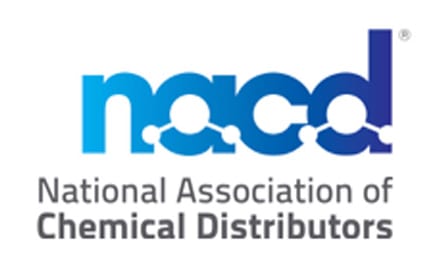Ready to proof -- CLJ 09/21/21
Kristin proofed on 9/21
CLJ revised on 9/22
Proofed by KP on 9-22
INDUSTRY UPDATES
“Building on our annual trend research, our Wood Design team works with furniture designers around the world,” said Rob Haley, Color Trends Manager for AkzoNobel’s Industrial Coatings business. “We interpret what’s happening in architectural color, soft-furnishings and fashion to create the overall look and feel of our wood finishes, introducing unique techniques such as wire brushing and heavy distressing.”
Specially crafted finishes are required for different products, as wood coatings are often applied to highlight and play with the natural beauty of the substrate rather than to cover a blank surface. A highly trained technical service team works closely with the Wood Design team to ensure that AkzoNobel’s wood finishes are robust and can be industrialized for customers around the world.
Four unique color palettes created around the Color of the Year will have an influence on home decor – including furniture, flooring, cabinetry and building products – in the coming year:
- The Studio – offering soulful, warm and modern tones;
- The Salon – embracing artful qualities;
- The Greenhouse – reveling in nature’s influence; and
- The Workshop – creating flexibility in multifunctional spaces.
“Wood is not only timeless, it’s also exceptionally versatile,” said Haley. “We want to inspire and empower our customers with creative opportunities for combining colors and trends, like formal designs and finishes ranging from flat to glossy. That’s how we make wood the perfect companion for our modern times.”
AMSTERDAM – The airy blue of Bright Skies, AkzoNobel’s Color of the Year 2022, has been translated into colors and finishes for wood coatings. The colors offer a breath of fresh air to wood product manufacturers.
After a spell of feeling shut in, people are craving expansion. Extensive global trend research conducted by a team of in-house paint and coatings color experts and international design professionals reveals that people want open air, connections to the outdoors and a fresh approach to everything.
AkzoNobel’s 2022 Color of the Year Offers New Options for Wood Coatings
Image courtesy of AkzoNobel.

Polymers and Coatings Winter Short Course Takes Place in February
SAN LUIS OBISPO, CA – The Western Coatings Technology Center at California Polytechnic State University, San Luis Obispo, in cooperation with the Cal Poly Conference & Event Planning Department, will offer the annual winter Polymers and Coatings Short Course Feb. 7-11, 2022. The short course will address both fundamental and application aspects of the field with equal emphasis.
Cal Poly’s winter short course on polymers and coatings brings together academic and industrial experts in the field. The one-week course covers many aspects of coating technology with emphasis on liquid coatings, both waterborne and solvent-based.
Photo courtesy of The Western Coatings Technology Center.

Participants benefit from discussions of a wide range of topics, including VOC and air quality aspects of coatings agencies. Participants are expected to have had some exposure to the coatings field, along with working knowledge in chemistry and other sciences.
NACD President Voices Concern Over House Budget Reconciliation Proposal
“Last month, both chambers of Congress passed a resolution outlining the budget and instructing key committees to draft the $3.5 trillion plan for new spending. Now, as details of the House version of the Reconciliation Package emerge, NACD has serious cause for concern. The Committee on Ways and Means has proposed more than 40 separate tax increases, collectively worth more than $2 trillion, representing the largest tax increase in decades. In a move that seems irrelevant to the budget discussion, the House package also greatly increases civil penalties for National Labor Relations Act violations while simultaneously eliminating or prohibiting tools employers can utilize during organizing campaigns and labor disputes,” Byer said.
Byer went on to say that the provisions in the Reconciliation Package hurt businesses and the people who support them. In terms of chemical distributors, Byer said in his statement, “Chemical distributors are an integral part of the chemical sector and the entire U.S. manufacturing supply chain because of the essential services and products they provide. While chemical distribution is big business, the majority of NACD members are small businesses, many of which are still feeling the effects of the economic downturn from the pandemic and its aftershocks on the supply chain. They can ill afford more fees, fines, taxes and turbulence.”
Byer concluded his statement by saying that the country is “in desperate need of a physical infrastructure plan,” and he urged the House to reconsider the Reconciliation Package.
ARLINGTON, VA – National Association of Chemical Distributors (NACD) President and CEO Eric R. Byer issued a statement expressing concern about provisions included in the U.S. House of Representatives’ Budget Reconciliation Package. In his statement, Byer asked the House to “reconsider this performative play.”

New Report Covers Global Paint and Coatings Market
DUBLIN – Research and Markets announced the release of a new report on the global paint and coatings market and the impacts on the market from COVID-19. The company reports that the global paint and coatings market is expected to grow from $199.87 billion in 2020 to $216.9 billion in 2021 with a compound annual growth rate (CAGR) of 8.5%. The growth is mainly due to companies rearranging their operations and recovering from the COVID-19 impact, which had earlier led to restrictive containment measures involving social distancing, remote working and the closure of commercial activities that resulted in operational challenges. The market is expected to reach $258.45 billion in 2025 with a CAGR of 4%.
According to the report, Asia-Pacific is the largest region in the global paint and coatings market, accounting for 55% of the market in 2020. North America is the second-largest region, accounting for 18%, and Eastern Europe is the smallest region.
Image: z_wei, iStock/Getty Images Plus via Getty Images

The report covers market characteristics, size and growth, segmentation, regional and country breakdowns, competitive landscape, market shares, trends, and strategies for this market. It also traces the market’s historic and forecast growth by geography.
Report Predicts Market for Organic Pigments to Reach $6.7 Billion by 2026
CHICAGO – According to a new market research report published by MarketsandMarkets™, the organic pigments market is projected to grow from $5.5 billion in 2021 to $6.7 billion by 2026. The printing inks segment accounted for a 36.4% share in terms of value in the organic pigments market in 2021 and is projected to reach $2.4 billion by 2026, growing at a compound annual growth rate (CAGR) of 3.9%. The paint and coating sector is projected to witness the highest CAGR of 4.5%, growing from $1.7 billion in 2021 to $2.4 billion by 2026.
Azo pigments accounted for nearly 42.6% of all organic pigments by value in 2020, according to the study. Azo pigments are among the organic compounds with a functional azo group (-N=N-). They are further classified based on their chemistry into monoazo and diazo pigments. These pigments are derived from water-soluble dyes and are the largest and most diverse group of synthetic organic pigments. Azo pigments are available in the shades of yellow, orange, red and brown. Due to their stable nature, these pigments are widely used in the printing inks and coatings industries.
In terms of application, printing inks accounted for the largest share by value of the organic pigments market. This is because of increasing demand from the packaging industry, especially food packaging. Increasing regulations and restrictions on the use of inorganic pigments has helped to increase the acceptance of organic pigments in the market. Printing inks based on organic pigments are also gaining wide acceptance in marketing publications such as brochures, magazines and other printed material due to the high vividness and sharpness of colors these pigments offer.
Analyzing the market by region, the study reports that Asia-Pacific is the most lucrative organic pigments market. A growing population, rising urbanization and increasing purchasing power are the key factors for the growth of the packaging, construction, electronics and automotive industries in the region. Additionally, growing demand for organic pigments and regulations encouraging the use of environment-friendly products have led to market growth. Organic pigment manufacturers are targeting this region, as it is the strongest regional market for industries such as textiles, plastics and construction. According to the study, manufacturers are also shifting their production base to Asia-Pacific because of the low cost of production and ability to serve the local emerging markets.
Synthetic-based organic pigments account for a major share of the organic pigments market in terms of value, with a share of 93.6% in 2020. The high growth and market share of synthetic organic pigments are attributed to key advantages these pigments provide over other natural organic pigments. Synthetic pigments are manufactured using petroleum compounds, acids and other chemicals, usually under high heat or pressure. They are generally synthesized using ring-based aromatic compounds. These chemicals can produce an extremely large number of variations in the molecular structure. They provide the added advantage of higher durability, high lightfastness and better gloss.
Photo: kali9 / E+ via Getty Images

